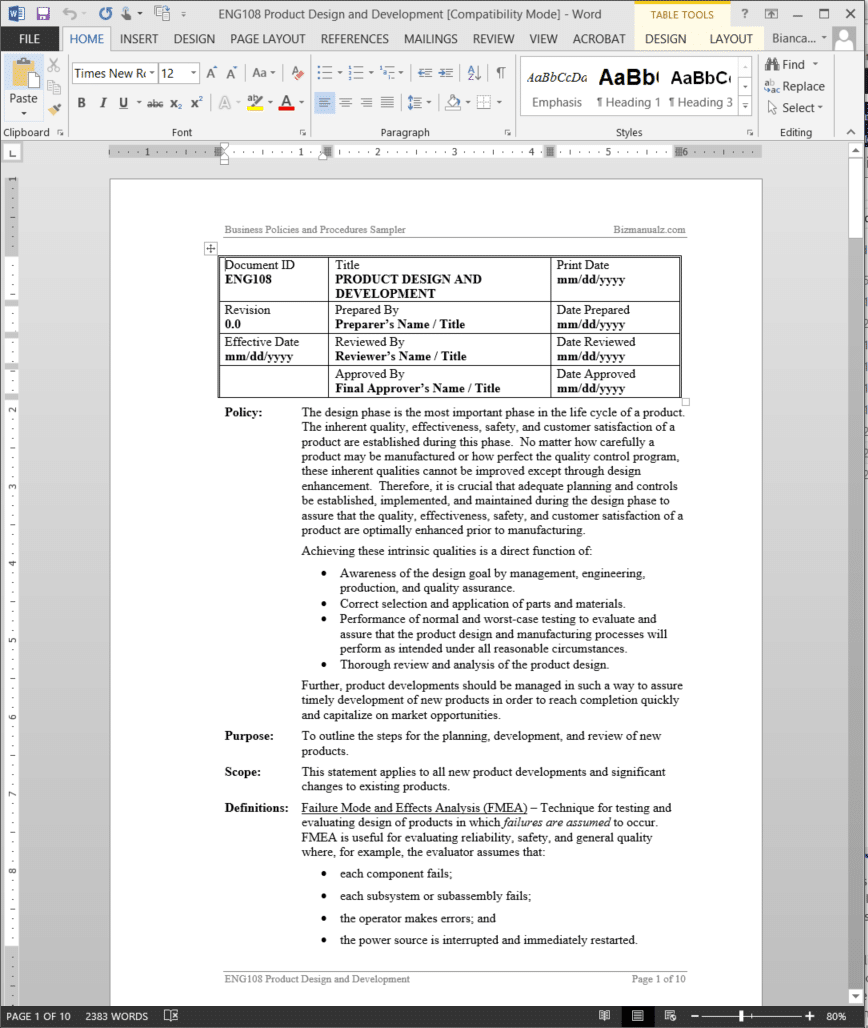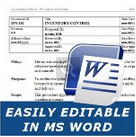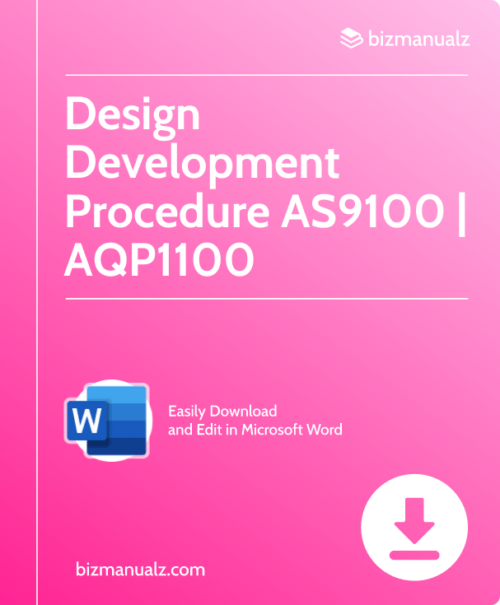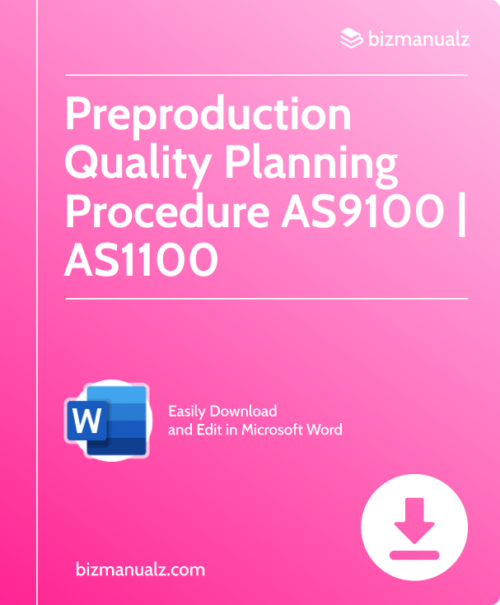Product Design Development Procedure Template Word
The Product Design Development Procedure Template Word is a comprehensive guide that helps businesses streamline their product design and development process. This template is designed to help businesses create a structured approach to product design and development, ensuring that all aspects of the process are covered and that the end product meets the needs of the customer.
The template includes a step-by-step guide that covers all aspects of the product design and development process, from initial concept development to final product launch. It also includes templates for key documents such as product specifications, design briefs, and project plans, making it easy for businesses to create these documents quickly and efficiently.
Using the Product Design Development Procedure Template Word can help businesses save time and money by ensuring that the product design and development process is efficient and effective. By following the structured approach outlined in the template, businesses can avoid common pitfalls and ensure that the end product meets the needs of the customer.
The template is easy to use and can be customized to meet the specific needs of any business. It is available in Microsoft Word format, making it easy to edit and share with team members. The template is also fully customizable, allowing businesses to add their own branding and design elements.
In summary, the Product Design Development Procedure Template Word is an essential tool for any business looking to streamline their product design and development process. By following the structured approach outlined in the template, businesses can ensure that their products meet the needs of their customers and are launched on time and within budget.
Product Design Development Procedure
The Product Design Development Procedure outlines the steps for the planning, development, and review of new products. It applies to all new product developments and significant changes to existing products. (10 pages, 2,411 words)
The design phase is the most important phase in the life cycle of a product. The inherent quality, effectiveness, safety, and customer satisfaction of a product are established during this phase. No matter how carefully a product may be manufactured or how perfect the quality control program, these inherent qualities cannot be improved except through design enhancement. Therefore, it is crucial that adequate planning and controls be established, implemented, and maintained during the design phase to assure that the quality, effectiveness, safety, and customer satisfaction of a product are optimally enhanced prior to manufacturing.
Further, product developments should be managed in such a way to assure timely development of new products in order to reach completion quickly and capitalize on market opportunities.
Product Design Development Definitions:
Failure Mode and Effects Analysis (FMEA) – Technique for testing and evaluating design of products in which failures are assumed to occur.
Fault Tree Analysis – Deductive (top-down) approach to failure mode analysis. First, a system failure or safety hazard is assumed. Next, through the use of detailed logic diagrams, basic component failures or events are identified that could cause the assumed system failure or safety hazard. Once identified, computational techniques are used to analyze the basic defects, determine failure probabilities and establish severity of effect.
Failure Mode Effects Criticality Analysis (FMECA) – Inductive (bottom-up) process; assumes basic defects at the component level and determines their effects on higher levels of assembly. Failure modes are analytically induced into each component and failure effects are evaluated and noted, including severity and probability of occurrence. FMECA can be performed using either actual failure data derived from field failures or hypothesized failure modes derived from design analysis or other sources. In addition to providing information about failure cause and effect, FMECA provides a structured method for proceeding component-by-component through the system to assess failure effects.
 Product Design Development Procedure Activities
Product Design Development Procedure Activities
- New Product Initiation
- Design Planning
- Product Development
- Product Testing and Qualification
- Design Review and Verification
- Product Design Documentation
Product Design Development Procedure References
- ENG102 ENGINEERING CHANGE/DOCUMENT CHANGE CONTROL






















Reviews
There are no reviews yet.